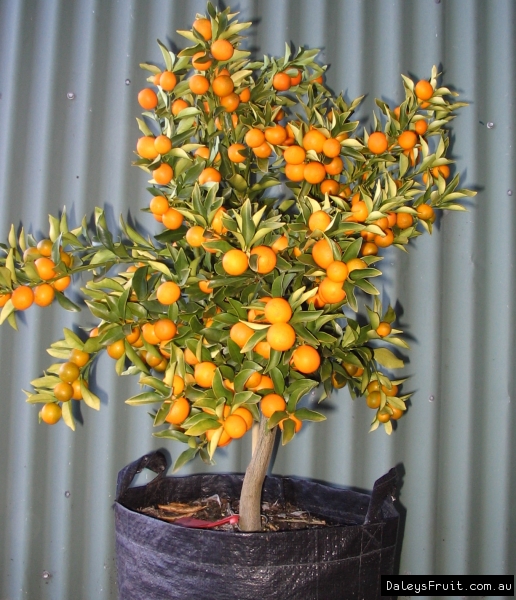Dwarf Fruit Trees
CategoryDwarf Citrus Trees
Fruit Trees > Dwarf Fruit Trees > Dwarf Citrus Trees
Dwarf citrus trees such as oranges, lemons, and limes are living conversation pieces. Daley's Nursery has been growing dwarf citrus trees that give delicious fruits for over 30 years. How? They graft a normal fruiting branch of a fruit tree (called a scion) to a dwarf tree rootstock to create a small tree that produces the fruit of its full-size cousin. Their shiny foliage, bright fruits, and fragrant blossoms provide year-round enjoyment and is the reason they are so sought after as containerised pots. Dwarf citrus trees require periodic repotting (every third year or so.) They have a shallow root system, so a wide container is far better than a deep one. When repotting, use a fresh mixture of one-third peat moss, one-third sand, and one-third sterile potting soil. Citrus trees respond well to pruning. Keep all the dead branches trimmed off, and thin the plant to the three strongest trunks.
Naturally Dwarf Plants
Fruit Trees > Dwarf Fruit Trees > Naturally Dwarf Plants
These plant varieties are naturally small and often very good for growing in pots. They are usually very easy to keep under 2m tall via pruning when grown in the ground or via root restriction in a pot.
Semi Dwarf Plants
Fruit Trees > Dwarf Fruit Trees > Semi Dwarf Plants
When compared to the average size of this plant they are usually much smaller. Eg. If a mulberry naturally grows to 10m but this particular mulberry is known to be 2-5m then this is a semi dwarf fruit tree. Often produced by growing them from cuttings but can be just unique to the particular variety.
True Dwarf Plants
Fruit Trees > Dwarf Fruit Trees > True Dwarf Plants
A true dwarf uses grafting or cuttings to produce a tree that is very compact and small but produces the same sized fruit. Examples would be citrus where the tree usually grows over 5m but when dwarf it can be under 2m.






































































































































































